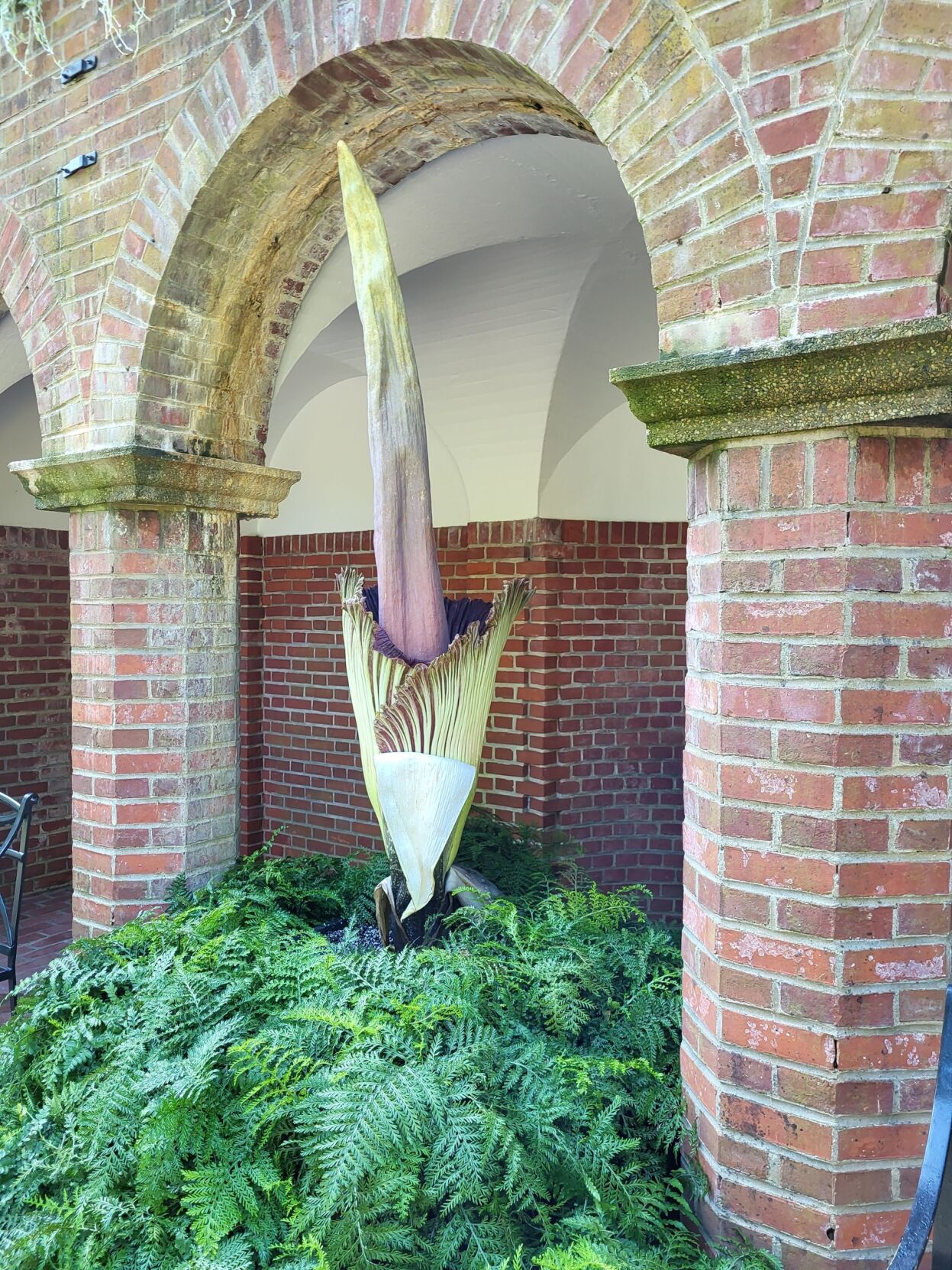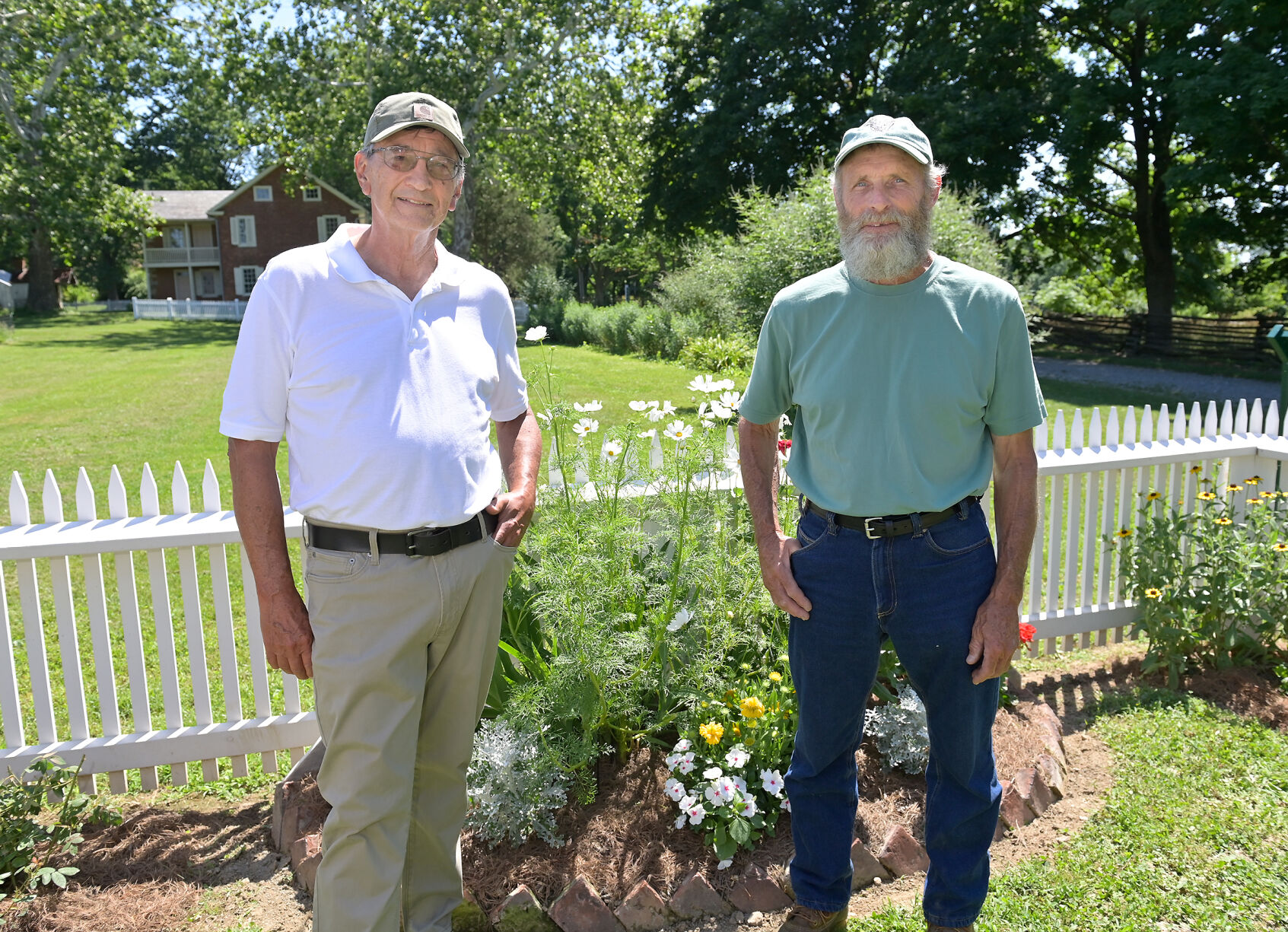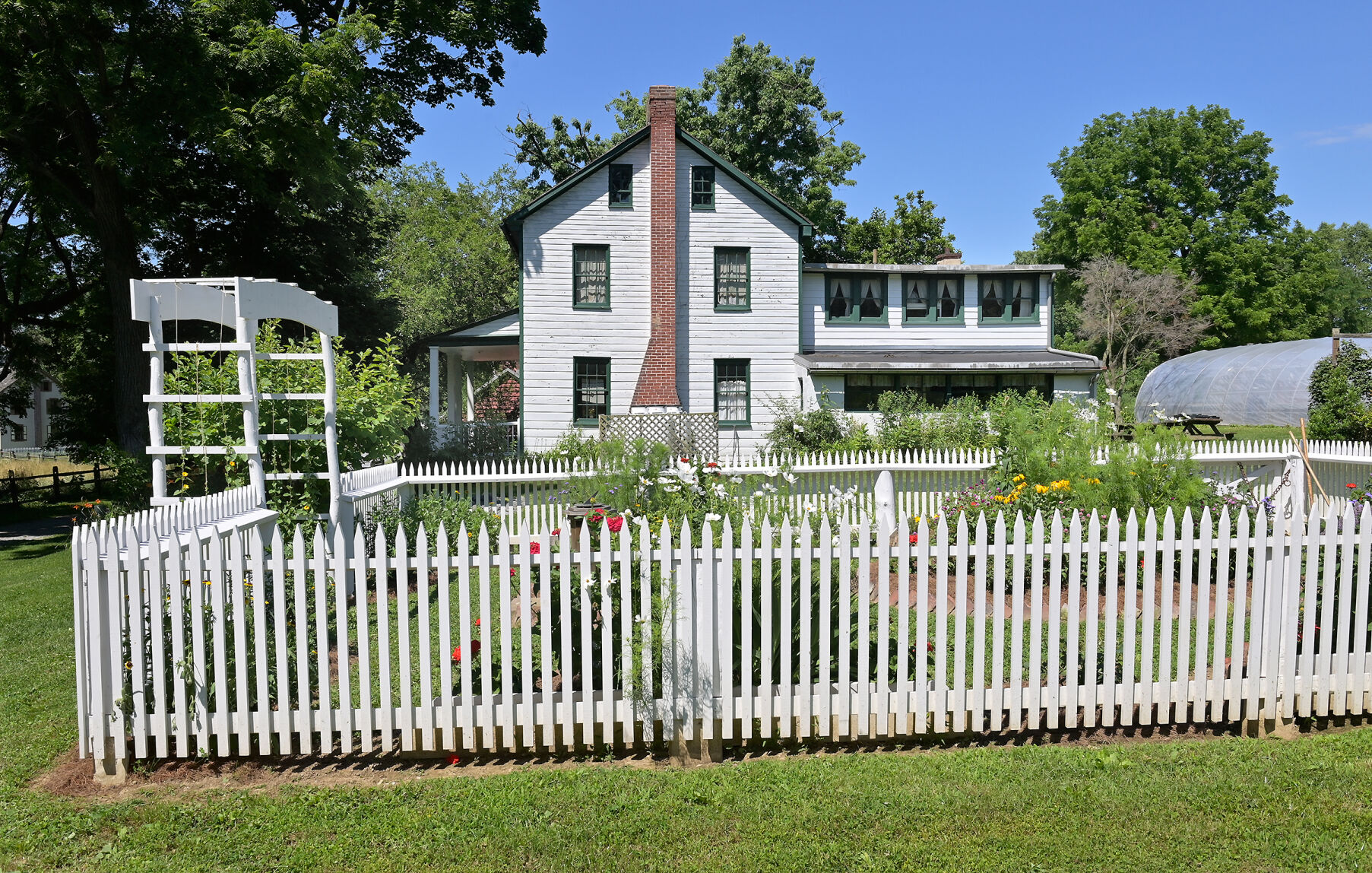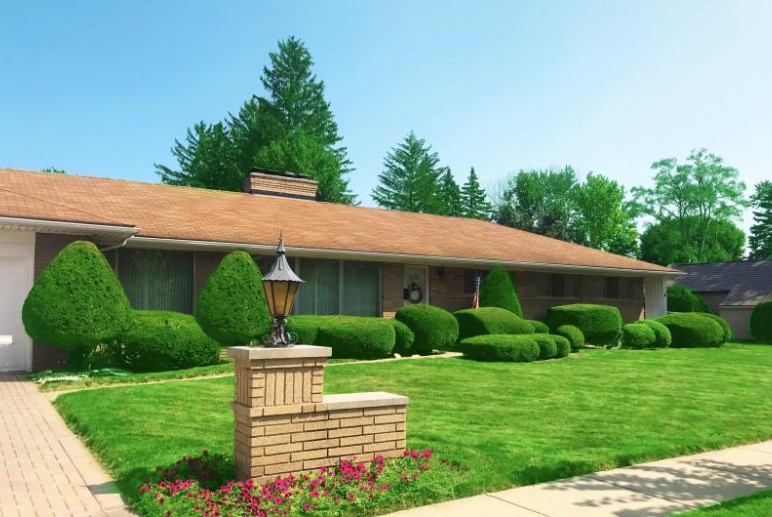Inside a tidy white picket fence grow cosmos and zinnias, herbs and daisies.
Vintage bricks surround the flower beds. Black-eyed Susan vines climb the trellis at the entrance.
This is the “Just for Pretty” garden, but there’s a lot going on here beyond the beauty.
The newest garden at Landis Valley Village and Farm Museum shows what could be created in 1880s when things like cast iron stoves or sewing machines would allow a woman to do more than survive and provide. It shows the kinds of plants and materials that would have been available in Lancaster long before gardeners could order anything online. It’s a living, growing lesson of something that’s often not covered in history books.
“Now she could plant flowers instead of just vegetables,” says Bob Haas, an heirloom seed project volunteer and the person behind this new garden.
A pleasure garden
The 1880s pleasure garden is close to the blacksmith shop and replaces an herb garden that took too much time for volunteers of the seed project, as that project grows. The seed project preserves heirloom vegetables and plants grown in the Pennsylvania Dutch region.
Before the herb garden was planted, this was where a crew added a building for the filming of Toni Morrison’s “Beloved,” starring Oprah Winfrey.
Before that, there was a barn next to the 1860s-era Pennsylvania German farmhouse that now houses the heirloom seed project.
Throughout the Landis Valley homestead, the growing side of living history are found in gardens producing seeds for the heirloom project, plus three edible gardens. Each of these three gardens show what would have been grown for food at different times from the mid-18th century through the early 19th century.
Soon after Haas started volunteering, he was asked how he would replace the herb garden.
He read an account from the 1880s of a woman and a visiting friend in a flower garden.
“The visitor asked, ‘Why did you plant this?’ as if to say, ‘We don’t do this,’” he says. “And she said, ‘I did it just for pretty.’”
This woman from long ago became his inspiration for the new garden.
“Here was a person who had time and resources to plant something that they didn’t have to have just to stay alive,” he says.
With help from Joe Schott, Landis Valley’s farm and gardens manager, the garden plot was excavated to remove remaining stones from the barn. Topsoil and composted manure from museum grounds were added to enrich the soil.
Garden research
Haas researched agriculture from the era and searched photos for a glimpse of ornamental gardens. No detail was spared, from the fence to the flowers.
While the time period’s Victorian style favored iron fences, Pennsylvania Germans still liked white picket fences.
“The fact that you painted it meant that you had the means and the time,” Haas says.
While the fence should be a closed loop, historically, Haas wanted Landis Valley visitors to easily walk into and through the garden. Adding an arbor solved that problem.
Inside the fence, the ground cover has a lot of clover, which is low maintenance and stays green for a while.
Haas looked for terracotta to edge the garden beds. He found brick pavers from Mount Joy School, which was built in the same era. A wide swath of ground in front of the bricks is bare to bring even more attention to the tidy border.
“The edging was highly prized and heavily judged,” he says.
Haas read diaries of Amish and Mennonite women during that era and came up with a “spot garden” style. The space starts with a plan of what his fictitious gardener wanted. Then the spots would be filled with a favorite plant of a grandmother or mother and perhaps single plants from a friend’s garden.
For the plants, he researched seed catalogs to see what would have been available in the 1880s and which are still available. Haas picked about 20 plants to add to the garden, starting with tulips and daffodils.
The garden has heirloom roses, pansies, daisies, salvia, asters and more.
“One of the reasons that cosmos is prominent is because it represented order, harmony and symmetry because of its reference to the universe,” he says.
He added sage, rosemary and thyme for medicinal and culinary uses.
One shared plant is a personal favorite: gomphrena from his own garden in Rapho Township and originally sourced from Monticello.
This is the first full growing season for the garden. While it still has a few years to fill in, early July is when the Just for Pretty garden is at its prettiest.
More stories to check out

After a close watch for years, a six-foot tall corpse flower opened up at Longwood Gardens.

There are dozens of sessions, in-person and virtual, throughout July to make floral arrangements and learn about a wide range of plants.

The Porches & Posies Garden Tour includes 12 gardens throughout the southern end of the county.

























